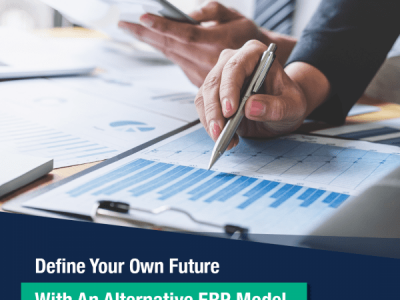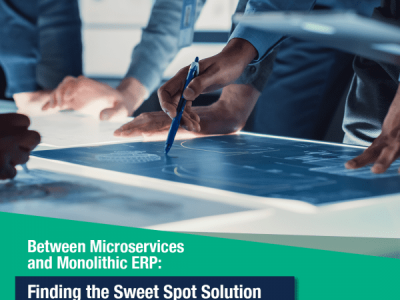
The average lifespan of an ERP solution is around 5 to 10 years. If you’re a reseller for one of the top 10 vendors who accounted for 31.9% of market share in 2018, an upgrade can be expected every three years or so. But if you’re running your own in-house technology platform solution, it could well be reaching end-of-life.
That presents an urgent dilemma.
Do you augment or upgrade your current platform using existing support resources, or start from scratch with offshore developer support? There is rarely the luxury of time when it comes to making a decision. Crucially, it could be your customers who make the decision for you.
If your customers decide that your ERP falls short in providing the bespoke innovation and functionality they – and their customers – now expect as standard – they will migrate to ERP providers who can support their business strategy. As a result, you could see your pipeline dry up entirely.
Instead of providing the key to securing new business, your software platform could be the barrier to closing deals or even retaining your existing customer base.
What are the risks of sticking with end-of-life software?
As if the prospect of watching your customer base vanish in the direction of your competitors wasn’t alarming enough, end-of-life software can pose additional threats to your business:
- Software incompatibility – new applications can’t run on previous versions of an operating system. And what do your customers want above all else? You guessed it, new applications.
- Compliance – particularly in sectors such as healthcare and financial services where strict regulations apply, or in food service where HACCP and supply chain data are crucial to limiting liability, legacy systems may be too slow to respond to changes in legislative or regulatory requirements. There is also a connectivity issue between older legacy systems and integration touchpoints.
- High OpEx – if you’re committed to sustaining an end-of-life ERP solution to the absolute conclusion of its lifecycle, expect to meet the considerable cost of regularly fixing bugs, patching the OS, and covering downtime of mission-critical software failures.
- Substandard performance – it won’t just be that your ERP solution is out of warranty. It will also be off the pace and – given the rapid pace of technology – noticeably more clunky and cumbersome than your competitors. That lack in performance will not go unnoticed by your customers.
- Security risks – where vulnerabilities in your ERP software are no longer patched, it presents open season for hackers. In many cases, software vendors will no longer guarantee that their solution will work with unsupported platforms. It’s not just the obscure software providers, either. Many vendors and businesses were caught out by the demise of Windows XP and Windows 2003, even though they had plenty of time to prepare.
If you’re prudent, this element of planned obsolescence relating to your software solution will be factored into your business strategy. But that degree of foresight can take years of maturity to acquire, whereas the sector is typically fuelled by billion-dollar ERP firms who invest millions in R&D alone making it increasingly difficult for independent software vendors to compete. That 5 to 10-year lifespan of an ERP solution is an eternity until you discover that your ailing platform is leeching customer revenue from the business.
But there are options out there. At the first warning signs that your solution is off the pace, it’s time to consider the following options:
How to address end-of-life ERP software
- Rebuild in-house – if you have the technical resources, the strategic acumen, and an abundance of time, rebuilding with an in-house developer team preserves your autonomy, but it’s expensive and can be excruciatingly slow to market. For a start, resources still have to be dedicated to supporting the legacy software. Dev teams also have to be ‘re-skilled’ on new technologies, or you risk compounding technical debt by applying old techniques to new software.
- Resell from a ‘Big 10’ vendor – You’ll be getting an ERP solution that is tested (and trusted) to the highest standards. With that benefit comes high CapEx and little opportunity to differentiate your business locally or for specific verticals. It really becomes a services play for your organisation if you go down this route. In addition, rollout of those all-important new features can be slow and support for third-party APIs can be limited.
- Rebuild or partner with offshore team/vendor – savings on software development can be made by outsourcing to an offshore team or vendor, and it’s certainly a route that more businesses are willing to explore. However, you can soon find your small business swamped with consultants, not to mention struggling with issues of cultural alignment and communication.
There is another option, and it’s one that is growing in popularity in the era of cloud-based ERP and SaaS. By choosing a White Label ERP or business management software solution, local software providers can differentiate themselves by offering bespoke solutions that fit seamlessly with customer needs.
How did we get here?
From the early ERP platforms in the 1990s that typically monitored manufacturing processes, traditional ERP has always focused on tasks and transactions. Their strength was in turning previous experiences into a repetitive process.
Subsequently, they grew to incorporate functionalities such as accounting, CRM, supply chain management and so on, but rarely in a way that could be described as coherent or intuitive. Only in the last decade or so have we been able to lean on fully integrated ERP platforms that offer a “customizable system of specialized business applications from multiple vendors.”
Change, however, is the ever-present antagonist, and traditional ERP systems are simply not designed to keep up with the relentless pace of technology. Their purpose is to drive efficiency, not innovation. Unfortunately, innovation is precisely what customers do want.
Today’s stakeholder expects:
- Customer-facing interfaces that evoke the usability and flexibility of their day-to-day apps.
- Business solutions rather than products.
- AI-driven predictive analytics and insight, not just historical data.
- Bespoke platforms designed to meet a specific need, not broad-stroke efficiency.
- Services that augment rather than replace human capability
The bigger issue at stake is that off-the-shelf ERP systems from the big global providers are out of joint with the trend towards local, personalised solutions. In our personal lives and consumer behaviour, we are accustomed to a high level of personalisation and localisation in the apps and platforms we use. We take it almost for granted that we can use a global software platform and tailor its services or functions to our individual profile.
The momentum towards bespoke services carries through into business software. We want an ERP solution that is as agile and flexible as our business – across mobile, cloud and virtual platforms – allowing us to modify functionality according to our individual and geographical circumstances.




